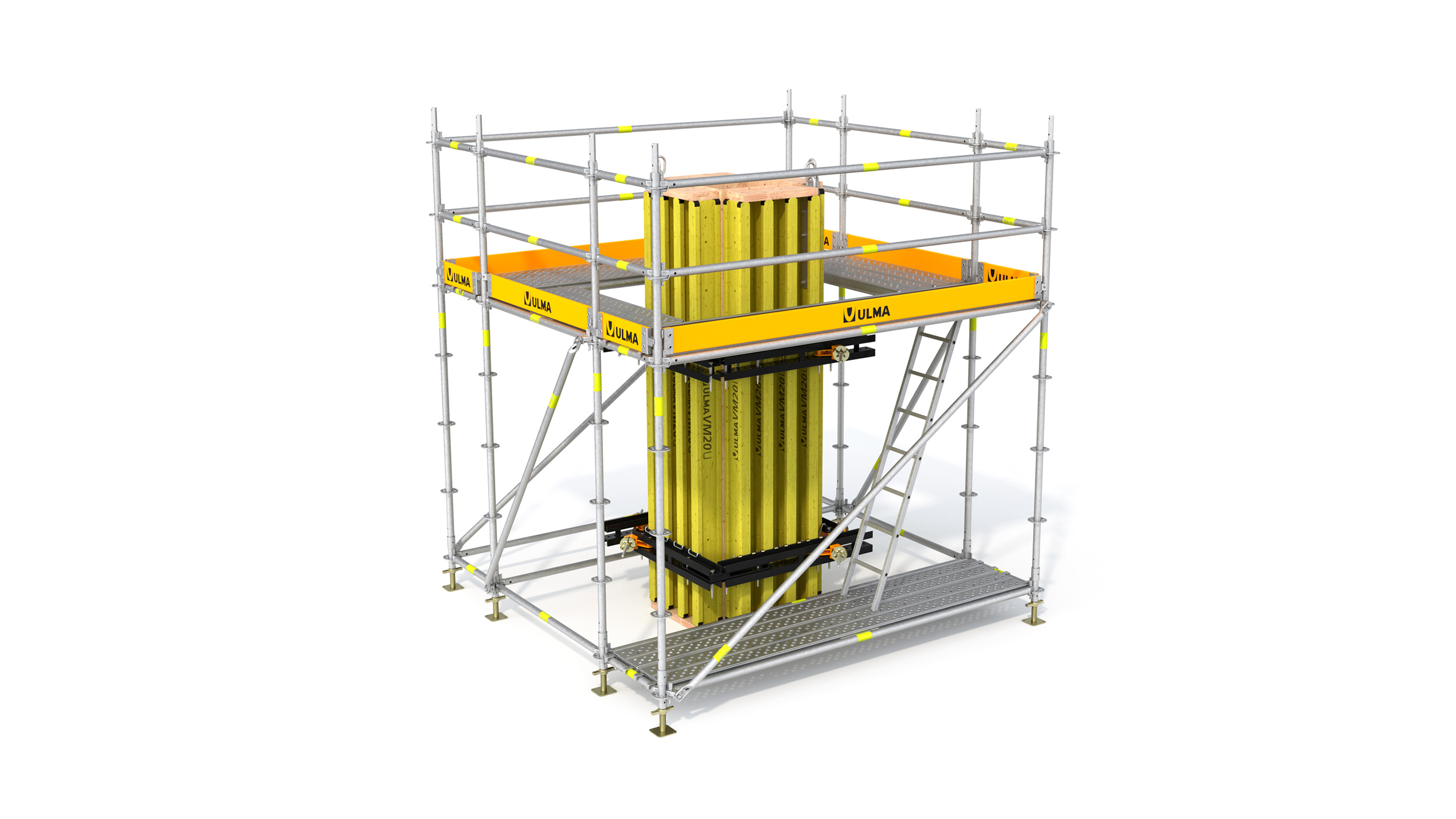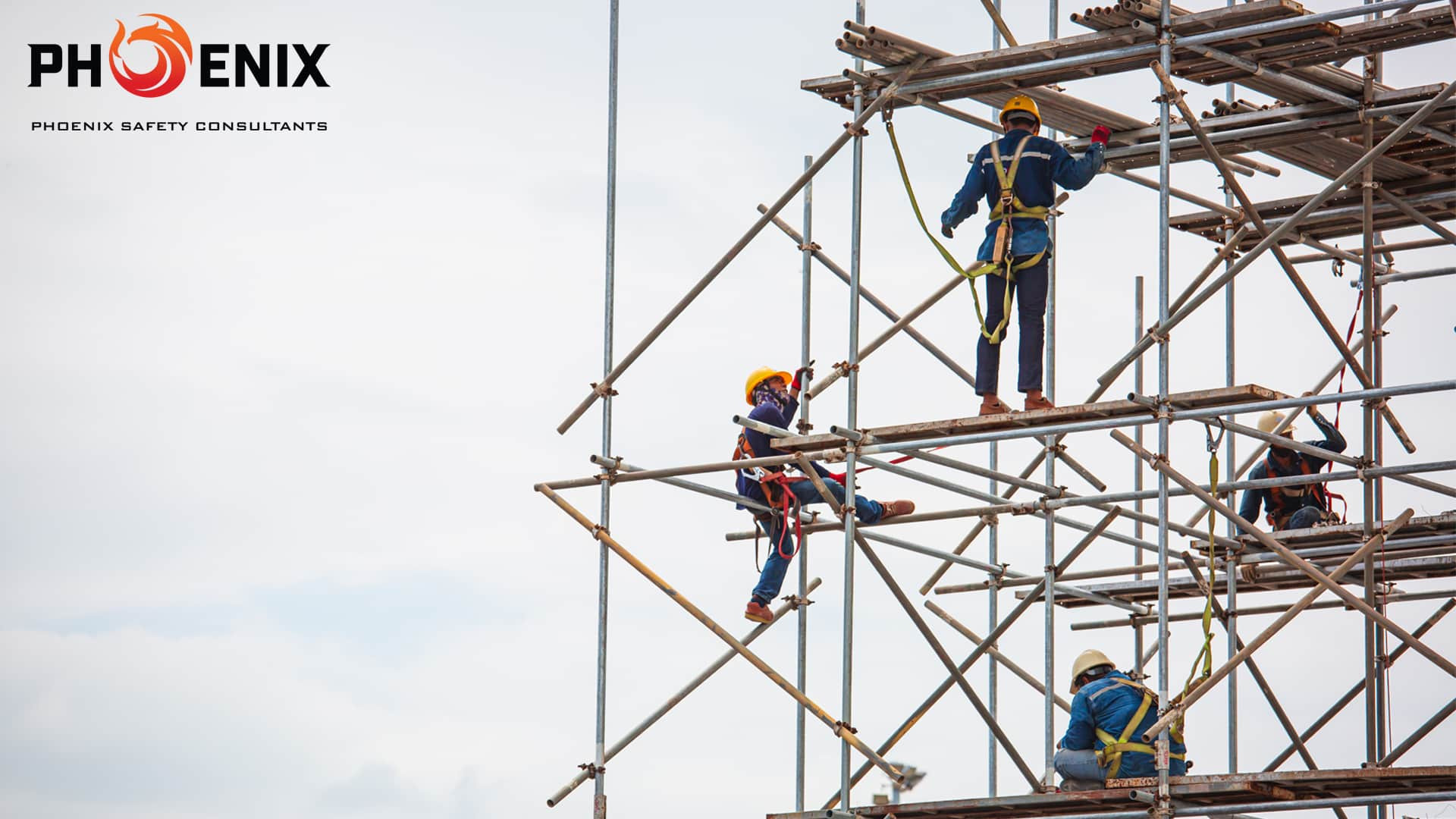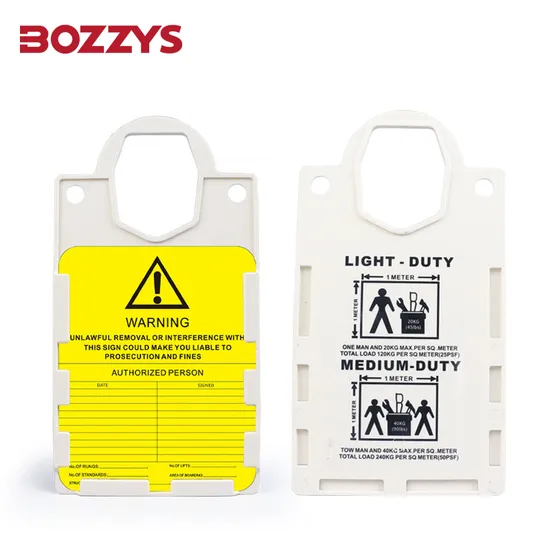Scaffolding is essential in construction. It provides support and access to high areas.
In Saudi Arabia, construction is booming. With its unique climate and landscape, the right scaffolding is crucial. Understanding the different types of scaffolds used can help ensure safety and efficiency on site. This knowledge is vital for workers and project managers alike.
Let’s explore the three main types of scaffolds in Saudi construction. Knowing these can make a big difference in your project’s success.
Introduction To Scaffolding
Discover the three main types of scaffolds used in construction in Saudi Arabia. Frame scaffolds offer flexibility and ease of use. System scaffolds provide strong support for larger projects. Lastly, suspended scaffolds are ideal for working at height. Each type serves specific project needs.
### Introduction to Scaffolding Scaffolding is a crucial element in the construction industry, especially in Saudi Arabia, where towering skyscrapers and complex architectural designs are common. Imagine watching a building rise, layer by layer, and wondering how workers reach such heights safely. That’s where scaffolding comes into play, acting as the backbone of construction work. Scaffolding allows workers to access high and hard-to-reach areas securely. It’s not just about height; it’s about creating a stable platform where work can be performed efficiently. Whether you’re a seasoned builder or just curious about construction, understanding the types of scaffolding can be enlightening. ###Importance Of Scaffolding
Why is scaffolding so vital in construction? It ensures safety first and foremost. Construction sites can be dangerous, and scaffolding provides a stable environment, minimizing risks of falls and accidents. Moreover, scaffolding enhances productivity. With a solid structure in place, workers can focus more on the task at hand rather than worrying about precarious positions. It also supports heavy materials and tools, facilitating efficient workflow. Consider the time saved when workers can move freely and safely around the building. Scaffolding isn’t just a support system; it’s an enabler of progress and innovation in construction. ###Scaffolding In Construction
In Saudi Arabia, scaffolding plays a pivotal role due to the rapid urban development and architectural marvels being constructed. The types of scaffolding used often depend on the specific requirements of a project. Traditional Scaffolding is commonly seen in smaller projects, providing a simple yet effective solution for low-rise buildings. On the other hand, Suspended Scaffolding is more prevalent in high-rise constructions, offering flexibility and ease of use. It’s fascinating to see how these structures adapt to the demands of modern architectural designs. Lastly, Mobile Scaffolding is gaining popularity for its versatility. It’s perfect for projects that require frequent repositioning, saving time and effort. Next time you pass a construction site, take a moment to appreciate the intricate scaffolding systems in place. They are not just metal and wood; they are the silent protectors and facilitators of our ever-evolving skylines.Supported Scaffolds
Supported scaffolds are common in Saudi Arabian construction. The three main types include frame scaffolds, system scaffolds, and tube and coupler scaffolds. These structures provide essential support for workers and materials.
Supported scaffolds are a staple in the construction industry, especially in Saudi Arabia. These structures are essential for providing stability and safety to workers as they perform tasks at various heights. Understanding how supported scaffolds are used can enhance project efficiency and safety.Definition And Structure
Supported scaffolds are temporary platforms that rely on a base or structure for support. They consist of platforms held in place by poles, frames, or outriggers. This design ensures that workers have a secure area to perform their tasks. You can think of them as a multi-level workbench, where each level is supported by a solid framework. This framework allows for easy adjustments and modifications, making it versatile for different construction needs. Their modular design means they’re easy to assemble and disassemble, saving time on-site.Common Uses
Supported scaffolds are used in a variety of construction projects, from small residential buildings to large commercial complexes. They’re ideal for tasks that require workers to move up and down frequently, such as bricklaying, plastering, or painting. In Saudi Arabia, these scaffolds are particularly useful in projects involving the construction of mosques, hotels, and office buildings. Their adaptability to different heights and structures makes them indispensable for complex architectural designs.Advantages And Disadvantages
Advantages: – Stability: Supported scaffolds provide a stable working platform, reducing the risk of falls. – Flexibility: They can be adjusted to fit various building shapes and sizes. – Cost-Effective: Reusable components help reduce costs over multiple projects. Disadvantages: – Time-Consuming Setup: Assembling the scaffold can be time-intensive. – Space Requirement: They require ample space for setup, which might not be feasible in cramped areas. – Weather Vulnerability: Strong winds can affect their stability, necessitating additional safety measures. Have you ever wondered how construction workers manage to work safely at such heights? Supported scaffolds might be the unsung heroes here, providing that crucial platform. Considering these aspects, do supported scaffolds seem like a viable option for your next project?Suspended Scaffolds
Suspended scaffolds are a common type of scaffold used in construction in Saudi Arabia. They hang from ropes or cables attached to the top of a building. Workers use them to perform tasks at great heights safely.
Definition And Structure
Suspended scaffolds are platforms hung by ropes or cables. They can be raised or lowered to reach different heights. The structure includes a platform, ropes, and a hoist. The ropes are strong and secured at the top of the building. The platform can hold workers and their tools.
Common Uses
Suspended scaffolds are used for tasks like window cleaning and painting tall buildings. They are also useful for repairing or maintaining high-rise structures. Workers can easily move up and down to access different areas.
Advantages And Disadvantages
Suspended scaffolds offer several advantages. They allow workers to reach high areas easily. They are also flexible and can be moved to different parts of a building. This makes them ideal for tall structures.
There are some disadvantages too. Suspended scaffolds can be expensive to set up. They also require careful handling and maintenance. If not properly secured, they can be dangerous. Workers must be trained to use them safely.

Credit: www.ulmaconstruction.com
Rolling Scaffolds
Rolling scaffolds are versatile in construction. Saudi Arabia primarily uses three types: supported scaffolds, suspended scaffolds, and rolling scaffolds. Each type serves different construction needs, ensuring safety and efficiency on site.
Rolling scaffolds are a popular choice in Saudi Arabia’s construction industry due to their mobility and versatility. Imagine working on a project where you need to move frequently without disassembling and reassembling your scaffold. This is where rolling scaffolds become invaluable, offering you a practical solution for dynamic construction sites. ###Definition And Structure
Rolling scaffolds are essentially mobile platforms designed for easy movement across construction sites. They consist of a sturdy frame mounted on wheels or casters, allowing you to roll them from one location to another. The structure is often made of lightweight materials like aluminum, making it easy to maneuver while maintaining stability. ###Common Uses
You’ll find rolling scaffolds particularly useful in tasks that require frequent repositioning, such as painting, plastering, or maintenance work. They are perfect for indoor environments where you need to cover large areas without much hassle. Picture a large warehouse; using a rolling scaffold can significantly cut down your time spent on setup and relocation. ###Advantages And Disadvantages
Advantages: – Mobility: Their primary advantage is mobility. You can move them around effortlessly, saving time and labor. – Flexibility: They adapt well to different heights and spaces, making them suitable for varied tasks. – Efficiency: Reducing setup and relocation time translates to increased productivity. Disadvantages: – Stability Issues: On uneven ground, they can pose a risk if not properly secured. – Weight Limitations: They may not support as much weight as stationary scaffolds, limiting their use in heavy-duty tasks. Have you considered how much time you could save by using a rolling scaffold on your next project? They offer a blend of convenience and efficiency, but it’s crucial to assess if their advantages align with your specific needs.Safety Regulations
In Saudi Arabia, construction uses three main types of scaffolds: supported, suspended, and mobile. Supported scaffolds rest on the ground or a surface. Suspended scaffolds hang from above using ropes or chains. Mobile scaffolds can move easily, often on wheels.
Safety is crucial for all scaffold types.
Safety regulations in construction are vital, especially when it comes to scaffolding. In Saudi Arabia, these regulations are not just guidelines but are enforced rigorously to ensure the safety of workers and the public. If you’ve ever seen scaffolding on a construction site, you might have wondered about the rules that keep it safe and secure.Saudi Arabian Standards
Saudi Arabia has specific standards for scaffolding that align with international safety norms. These standards are designed to prevent accidents and ensure the stability of scaffolds. A well-constructed scaffold should withstand severe weather, including the intense heat of the Saudi sun. It’s crucial for scaffolding to be regularly inspected, and any signs of wear and tear should be addressed promptly. Imagine you’re on a construction site; knowing these standards helps you identify potential risks before they become hazards.Compliance And Enforcement
Compliance with safety regulations is mandatory for all construction projects. The Saudi government has strict enforcement policies to ensure that every scaffold meets safety standards. Non-compliance can lead to severe penalties, which makes adhering to these regulations not just a legal obligation but a practical necessity. Think about the implications of ignoring these rules. How would it affect your project timeline and budget? Enforcement ensures that safety is prioritized over shortcuts.Safety regulations in Saudi Arabia are more than just rules; they are the backbone of construction safety. By understanding and adhering to these standards, you can contribute to a safer working environment for everyone involved.

Credit: www.sparsteel.com
Selecting The Right Scaffold
Choosing the right scaffold in Saudi Arabia can make or break your construction project. It’s not just about picking what’s available; it’s about selecting what’s best for your specific needs. The wrong choice could lead to delays, safety issues, or increased costs. Have you ever found yourself staring at a construction site, wondering why some scaffolds look more like modern art installations than practical structures? The answer lies in understanding the nuances of scaffold selection.
Factors To Consider
Every scaffold has its own set of advantages and limitations. You need to consider the height of your project and the load it will bear. Will the scaffold need to support heavy materials or just workers? Safety is paramount. Are the scaffolds compliant with local regulations in Saudi Arabia? Cost is another factor, but remember, cheap isn’t always safe.
Think about the environment. Is the construction site exposed to harsh weather conditions? Some scaffolds handle wind and sand better than others. You wouldn’t want your scaffold swaying like a palm tree in a storm. Maintenance is also crucial. Can the scaffold be easily repaired if damaged?
Project Requirements
Your project’s scope will heavily influence your choice. Are you constructing a skyscraper or just a modest villa? Each demands different scaffold strengths. Mobile scaffolds might be perfect for small projects where flexibility is key, whereas large-scale constructions might need more permanent and robust solutions.
Consider the duration of the project. Long-term projects may benefit from scaffolds that offer durability and stability over time. Temporary projects might prioritize ease of assembly and disassembly. What about the terrain? A scaffold suitable for a flat urban landscape might not work on rugged desert terrain.
Choosing the right scaffold is like finding the perfect tool for your toolbox. It’s about aligning your project’s needs with the scaffold’s capabilities. Have you ever been surprised by how much the right choice can simplify your work? Give it a try, and see how your construction project transforms.
Maintenance And Inspection
Maintenance and inspection of scaffolds are critical in construction. Regular checks ensure safety and durability. In Saudi Arabia, scaffold maintenance involves routine checks, repair, and replacement. Each step plays a role in preventing accidents and prolonging scaffold life.
Routine Checks
Routine checks keep scaffolds safe for workers. Inspect scaffolds for cracks or wear. Check bolts and fittings for tightness. Ensure braces are secure. Look for rust or corrosion. Regular checks prevent accidents and ensure safety.
Repair And Replacement
Repair damaged parts immediately. Replace worn-out components. Use quality materials for repairs. Ensure repairs meet safety standards. Check scaffold stability post-repair. Replace scaffolds beyond repair. Prioritize worker safety.
Future Trends In Scaffolding
As construction in Saudi Arabia continues to evolve, the scaffolding industry is not left behind. The future trends in scaffolding are not just about improving safety and efficiency; they’re about embracing innovation and sustainability. Imagine walking past a construction site and seeing scaffolds that adapt to the changing weather or even contribute to the environment. Let’s dive into what the future holds for scaffolding in Saudi Arabia.
Technological Innovations
Technology is reshaping scaffolding. Picture scaffolds equipped with sensors that monitor structural integrity in real-time. These innovations can alert workers to potential hazards before they become real threats. Automated systems might soon handle assembly, reducing human error and speeding up construction.
Virtual reality is another exciting trend. Imagine training workers using VR simulations of scaffold assembly, improving skills without the risks of real-world practice. This not only enhances safety but also boosts productivity.
Sustainability Concerns
Sustainability is gaining traction in construction. Scaffolds made from eco-friendly materials are becoming more popular. Using recycled steel or bamboo not only reduces environmental impact but also aligns with global green building standards.
Energy-efficient designs are also emerging. Scaffolding that supports solar panels can generate electricity for construction sites. This approach cuts down on fossil fuel usage and promotes sustainable energy practices.
As you consider scaffolding for your projects, think about these trends. How can you integrate technology and sustainability into your scaffolding choices? Reflect on the potential benefits these innovations could bring to your construction site.
Whether it’s leveraging advanced technology or choosing eco-friendly materials, the future of scaffolding in Saudi Arabia offers exciting possibilities. Are you ready to embrace these changes and contribute to a more sustainable and efficient construction industry?

Credit: phoenixsco.com
Frequently Asked Questions
What Are The Three 3 Types Of Scaffolding?
The three types of scaffolding are supported scaffolding, suspended scaffolding, and rolling scaffolding. Supported scaffolding uses platforms on a stable base. Suspended scaffolding hangs from above using ropes or cables. Rolling scaffolding is mobile and uses wheels for easy movement.
What Are The 3 Categories Scaffold Working Platforms Are Generally Rated?
Scaffold working platforms are typically rated in three categories: light duty, medium duty, and heavy duty. Light duty supports up to 25 pounds per square foot, medium duty handles up to 50 pounds per square foot, and heavy duty accommodates up to 75 pounds per square foot.
These ratings ensure safety and efficiency in construction.
What Are The 3 Load Ratings Of Scaffolds?
The three load ratings of scaffolds are light-duty, medium-duty, and heavy-duty. Light-duty supports 25 pounds per square foot, medium-duty supports 50 pounds per square foot, and heavy-duty supports 75 pounds per square foot.
What Are The Three Components Of Scaffolding?
The three components of scaffolding are standards (vertical tubes), ledgers (horizontal tubes), and transoms (cross tubes).
Conclusion
Scaffolding plays a crucial role in construction projects in Saudi Arabia. Tube and coupler scaffolds are versatile and widely used. System scaffolds offer efficient assembly and stability. Suspended scaffolds are essential for high-rise buildings. Each type serves unique purposes, ensuring safety and productivity.
Proper understanding helps in selecting the right scaffold. This ensures successful and safe construction. Always prioritize safety when choosing scaffolds. Scaffolding is vital for the industry’s growth and development. Keep updated on innovations and practices for better results.

